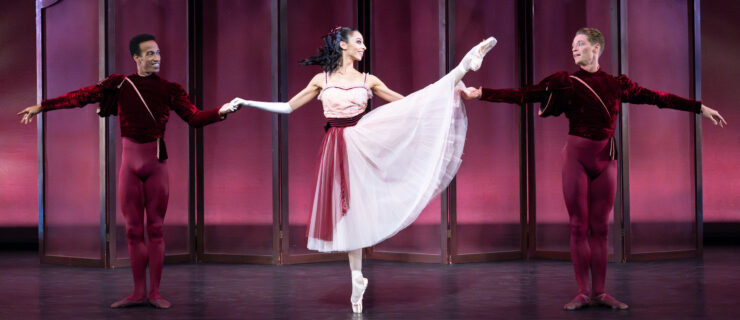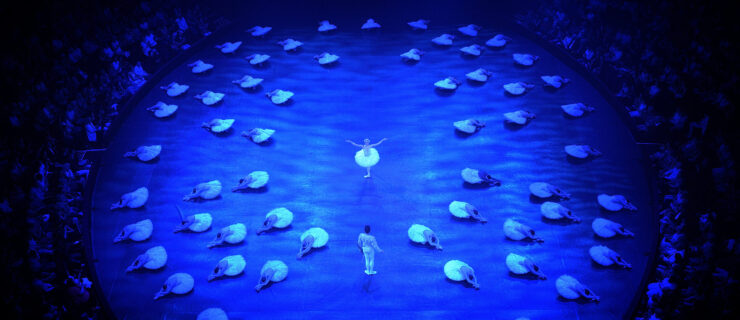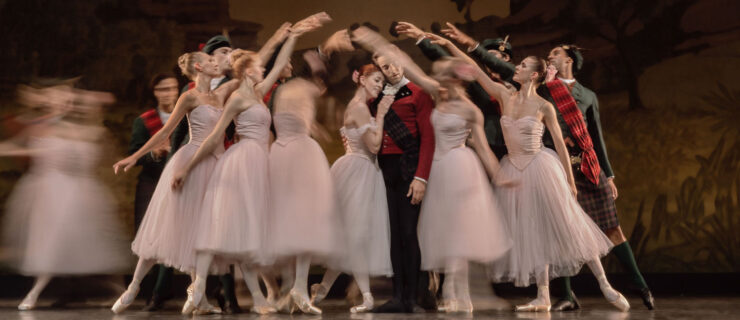What Ballet Needs Next
Much has changed since Pointe launched 15 years ago—the emergence of social and digital media, including Facebook, Twitter, Instagram and YouTube; continuing economic uncertainty, which has forced some ballet companies to downsize; the proliferation of competitions, like Youth America Grand Prix, and the extreme technique they showcase; the globalization of dance, making borders more permeable for dancers like David Hallberg and other international stars to move from one company to another; and the genesis of a new generation of dancers, choreographers and directors in the 21st century. Pointe asked five ballet movers-and-shakers for their opinions on what ballet needs to flourish in the next 15 years. (Interviews by Joseph Carman and Laura Cappelle.)
Lourdes Lopez
Artistic director, Miami City Ballet
You have to embrace new technology. It’s a no-brainer, but you have to figure out how to use it. People think of ballet as fragile. I completely disagree. I think it’s actually very powerful in terms of a transformational art form. Look how long it’s survived with all the issues and agendas—political, scientific, social and economic. I’m a believer that you can live-stream dance into a bar or restaurant or stadium or a parking lot. It’s not going to diminish the art form.
I also think Latin America is a sleeping giant with tremendous potential. There are so many investments moving there. I feel I need to get MCB down there—the roster of our dancers is like West Side Story, half Hispanic and half American. —JC
Justin Peck
Choreographer and New York City Ballet soloist
For some reason there has been a departure in choreography from focusing on the music itself. To me, what’s interesting in ballet is watching an interpretation of the music by the choreographer. I think that’s the purest form of choreography—George Balanchine was ahead of his time. We’ve had choreographers come to NYCB who’ve treated the music like an added factor or wallpaper. And there have been some very good pieces created that way, but then there’s not enough balance between music and movement.
Also, collaborations with different artistic mediums are very important. There’s a great section of Miami called Wynwood Arts District. Many street artists have painted this huge mural on a blank warehouse. That inspired me to get in touch with one of the artists and prompted collaboration on a ballet for MCB. There’s a history of dance being this meeting point of many artistic mediums, and I want to carry on that tradition in a very current, relevant way. —JC
Helen Pickett
Resident choreographer, Atlanta Ballet
Ballet sometimes has the reputation of being exclusionary. We need to keep moving forward in how our ballet companies look, in their makeup. We need to make ballet more inclusionary in other ways, too, like using other traditions of dance. But we have to investigate, not merely appropriate. With today’s speed, we take a master class, and we think we have an idea of a particular technique.
Choreography composition classes in big ballet conservatories are key. They get dancers curious and involved, and make them better artists. Perhaps as part of a conservatory’s requirements, making a short piece could be mandatory? Wouldn’t that be wonderful? So many ballet kids come into my improvisation class and say, “I was at an audition, and they asked me to improv and I didn’t know what to do.” It’s showing up more in the ballet world, and these kids need to know it. —JC
Sara Mearns
Principal dancer, New York City Ballet
It’s definitely great that more women are in directorial and choreographic positions in ballet. It’s not to say men don’t do a good job, but women are taking executive positions all over, not just in ballet. I’m actively seeking to work with more women choreographers because they have a different take. Women are very strong, and I’m a very strong dancer.
I don’t agree with the extreme technique that the competitions develop these days. I think it turns dancers into robots, which is not pretty to watch. I am definitely a believer in artistry over tricks. The artistry will last longer, and you can develop it over decades. Tricks will come and go; one day you won’t be able to do them. After a while they’re kind of boring. With artistry, something new always happens. It’s creating a story and using your imagination onstage. There is no imagination in tricks whatsoever. —JC
Benjamin Millepied
Director, LA Dance Project; director designate, Paris Opéra Ballet
One of the issues facing ballet is the relative lack of choreographers. There are some great ones, but I’d like to see more people who have the talent and the craft to create works that are complex, interesting and of our time. Part of the issue is that choreography isn’t taught; unlike music, there are no training programs. Choreography has rules, and you need a knowledge of architecture, space, music. It’s like studying mathematics. There’s also a lot to learn from the works of the past. I want to start an academy at the Paris Opéra Ballet where people will have a year to try it out and practice.
Ballet would also gain from more diversity. The idea that ballet is a white art is absurd and shocking, and it’s gone on for too long. Nothing would make me happier than having a company that reflects society, to have dancers onstage that people can relate to. —LC





